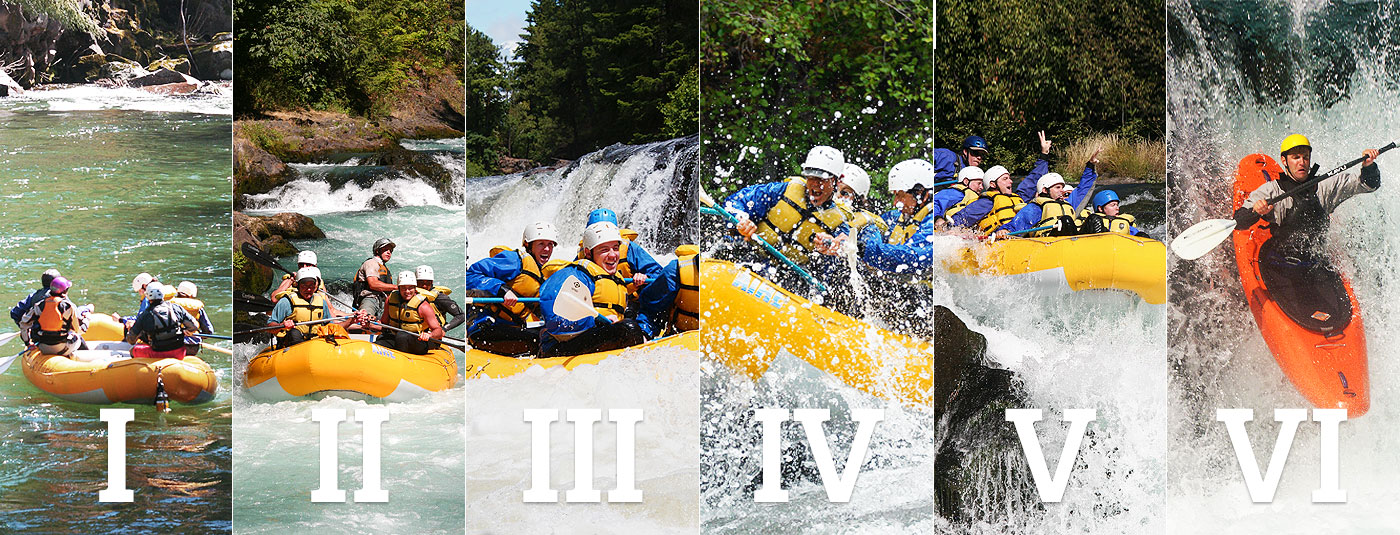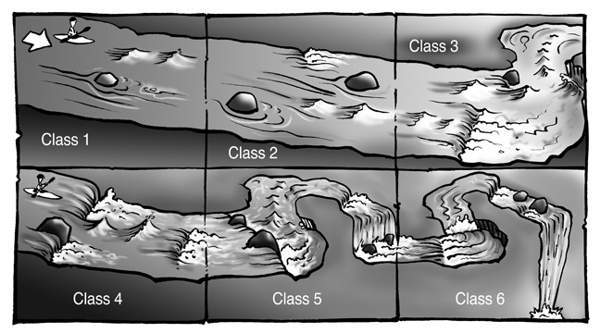
There are six levels each referred to as “Grade” or “Class” followed by a number. The scale is not linear, nor is it fixed. For instance, there can be hard grade twos, easy grade threes, and so on. The grade of a river may change with the level of flow. Often a river or rapid will be given a numerical grade, and then a plus (+) or minus (-) to indicate if it is in the higher or lower end of the difficulty level. Also note that while a river section may be given an overall grading, it may contain sections above that grade, often noted as features, or conversely, it may contain sections of lower graded water as well. Details of portages may be given if these pose specific challenges
Class 1 (Easy): Fast-moving current with small waves and few obstructions that are easily avoided. Low-risk. Easy self-rescue.
Class 2 (Novice): Straightforward rapids with wide-open channels that are evident without scouting. Occasional manoeuvring is required. Trained paddlers will easily avoid any rocks or medium-sized waves. Swimmers are seldom injured.
Class 3 (Intermediate): Rapids with moderate, irregular waves, strong eddies and currents. Complex manoeuvres and good boat control are required. Major hazards are easily avoided. Scouting is recommended for inexperienced paddlers. Self-rescue is usually easy and injuries to swimmers are rare.
Class 4 (Advanced): Powerful, turbulent, and predictable rapids with large, unavoidable waves and holes or constricted passages. Fast and reliable eddy turns and precise boat handling are needed to navigate safely through. Scouting is necessary, and rapids may require “must-make” moves above dangerous hazards. Strong Eskimo roll highly recommended, as there is a moderate to high risk of injury to swimmers. Self-rescue is difficult, so skilled group assistance often needed.
Class 5 (Expert): Extremely long, obstructed, or violent rapids with exposure to substantial risk. Expect large, unavoidable waves and holes, or steep, congested chutes. Eddies may be small, turbulent, difficult to reach, or non-existent. Reliable Eskimo roll, proper equipment, extensive experience, high level of fitness and practiced rescue skills essential for survival. Scouting highly recommended, but may be difficult. Swims are very dangerous and rescues are difficult.
Class 6 (Extreme): These runs exemplify the boundaries of difficulty, unpredictability and danger, and have almost never been attempted, if ever. The consequences of errors are very severe and rescue may be impossible. Only expert teams with ideal conditions and extensive safety systems should ever consider these rapids.
Credit : paddling.com

